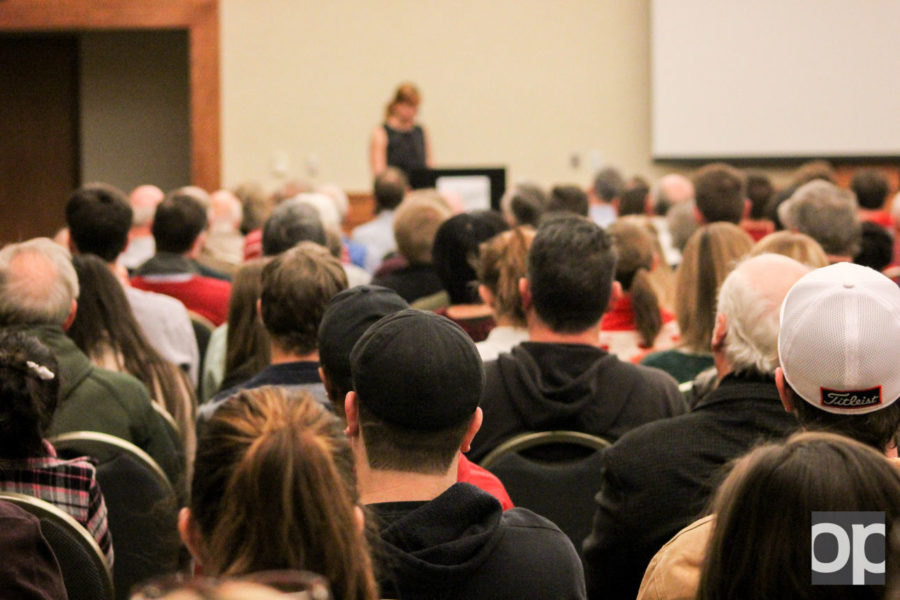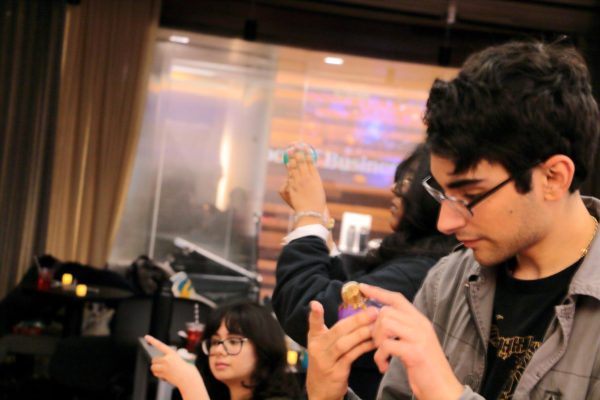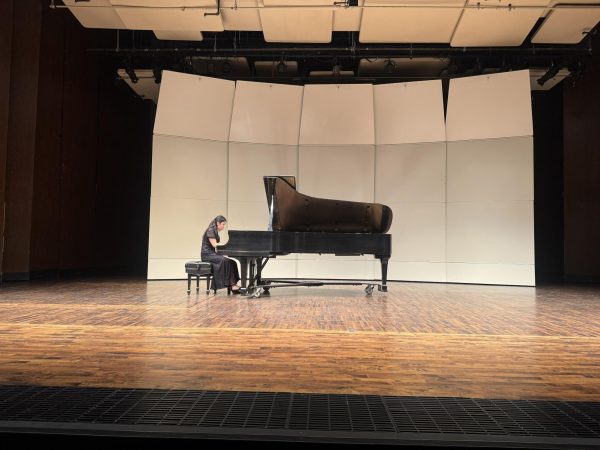From mummies to Ford: Erin Dwyer on the assassination of Lincoln
The Banquet Room upstairs in the Oakland Center was filled with eager attendees to hear professor Erin Dwyer’s lecture on conspiracy theories behind the Lincoln assassination.
Dwyer explained to the audience about her recent project in going through over 6,000 documents present in Kresge Library.
These documents were donated by Fredrick Black, a secretary for Henry Ford. Ford tasked Black with uncovering the truth behind the Lincoln murder, and sent Black on a 5 year quest for answers. After reviewing over 6,000 documents, which contained tales of events such as a mummy belonging to John Wilkes Booth, Dwyer said that Black found that Booth was shot and killed in a barn.
But Dwyer’s lecture wasn’t just about what happened 14 days after Lincoln died. Instead, she talked about the widespread controversy surrounding the killer and how so many people believed Booth lived longer than reported.
“A big part of it was the American desire to find some closure,” she said.
Booth was shot and killed in the barn without a trial, which led to anger from not only the American people, but from government officials wanting to know how deep the conspiracy to kill Lincoln went. Many forget that the Secretary of State at the time was gravely injured as well.
Dwyer also made the claim that a lot of people simply weren’t getting the information fast enough to dispel any rumors. People who lived anywhere away from Washington D.C. often learned of the assassination in the same issue as they learned about the end of the war.
This led to widespread misinformation in a quest for answers, Dwyer said. She quotes a famous phrase, “A lie can make it around the world before the truth can get its boots on.”
“An absence of information leads to speculation,” she said, “conspiracies such as these flourish in times of national division.”
Dwyer also explained that the information she presented in the lecture was all from her research going through the original Black documents. They have remained at Kresge Library, but no one person has gone through and catalogued every document present.
With the help of four student interns, she said that they are about a quarter of the way done cataloging the information.
“There’s no process for going through this much information,” Dwyer said, “I just go through it and find commonalities. I read the sources again and again, but there’s no great process.”
In addition to the organization of these archives, performers from the Music, Theatre, and Dance Department’s upcoming show, Assassins, were present at the lecture. The play in part follows Booth while he’s on the run, evading capture for killing the president of the United States.
David Bashaw, who will be performing the role of Booth, said that this was only part of the vast amount of research he conducted for this part.
“I started doing research before I even got the roll,” he said, “but I got an e-mail about this event, and just had to come.”
The Assassins play will be performed in the latter half of the Winter Semester, as well as three more History Comes Alive lectures.










